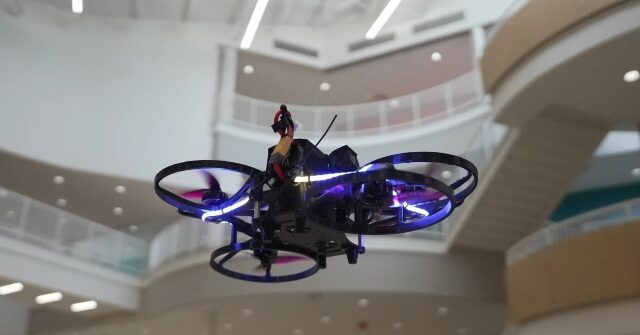Multiple Florida school districts will trial a drone response system designed to confront and subdue active shooters in schools using less-lethal weaponry.
Newsweek reports that several school districts in Florida are taking an technology-based approach to combat the threat of school shootings. The districts are set to trial a drone response system that aims to confront and subdue an assailant, buying time for law enforcement to arrive at the scene.
The system, developed by Texas-based manufacturer Campus Guardian Angel, can be activated within five seconds of a silent alarm being triggered. The company claims that the drones can confront the shooter within fifteen seconds. When not in use, the drones are stored on charging pads across the campus and are remotely piloted by a team of employees at the company’s headquarters in Austin.
Campus Guardian Angel CEO Justin Marston, drew a comparison between the drone system and sprinkler systems found in every school. He stated, “The sprinkler system is able to put water on the fire in seconds because it’s already there. You still want the fire trucks to come, you still want the guys with hose pipes to show up — but since sprinkler systems were installed, there hasn’t really been a mass fire in a school that killed a bunch of children.”
The quick response time of the system is largely due to the presence of a significant number of drones on each campus. In an interview with CBS News, Marston revealed that the company places between 30 to 90 drones in every school. The drones are agile, capable of reaching indoor speeds of up to 50 miles per hour and equipped with a glass breaker to help navigate through potential obstacles.
Each drone carries pepper spray pellets designed to blind or slow down an attacker. In the event that these measures fail, the drones themselves can be used as a weapon. Marston told CBS, “If somebody persists in wanting to murder children, then our answer is we’ll just continue to hit them with drones until law enforcement is on scene.”
The drones are intended to work in conjunction with local law enforcement, assisting them by clearing corners and distracting the suspect. “We feed live video to police, show exactly what’s happening, where the suspect is, and even smash through windows with a glass punch to create distractions,” Marston told Newsweek. “This tactic, like during the SAS’s famous hostage rescue [at the Iranian Embassy in London], can give officers a huge advantage.”
However, the use of drones in schools raises several logistical and ethical questions. Coordinating the actions of remotely piloted drones with local law enforcement during an active shooter situation could prove challenging and potentially waste valuable time. There are also concerns regarding the familiarity of drone operators with each school’s layout, their level of training, and their ability to make life-or-death decisions. The security and reliability of the drones, particularly in the face of internet connectivity issues, is another point of concern. Additionally, the presence of drones could potentially escalate the situation, causing a shooter to panic and act more desperately.
Campus Guardian Angel recently demonstrated the system at two Florida high schools, funded by $557,000 in state money approved by Gov. Ron DeSantis (R) as part of the 2025 budget. The company aims to install permanent systems in September and October, with a fully operational live service at the trial schools by January.
Read more at Newsweek here.
Lucas Nolan is a reporter for Breitbart News covering issues of free speech and online censorship.
Read the full article here


